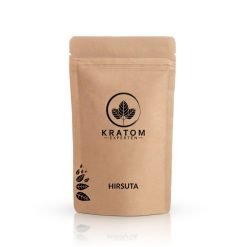Kratom
What Is Mitragyna hirsuta?
Mitragyna hirsuta – A Botanical Overview of This Tree
Mitragyna hirsuta is a lesser-known tropical tree native to Southeast Asia. It belongs to the Rubiaceae family – the same plant family as coffee – and is part of the Mitragyna genus, which includes several species found throughout Thailand, Vietnam, Laos, and surrounding regions.
Though often overshadowed by its more famous relatives, Mitragyna hirsuta is an intriguing plant in its own right. With broad, elliptical leaves, distinctive flower heads, and a long-standing connection to local traditions, this species deserves a closer look for anyone interested in tropical botany, ethnobotany, or sustainable plant-based rituals.
Where Does Mitragyna hirsuta Grow?
This species thrives in lowland tropical forests, often found near streams, rice paddies, or in disturbed areas such as roadsides and forest edges. Its preferred climate is warm, humid, and rich in biodiversity.
In Thailand, field studies have recorded Mitragyna hirsuta in many provinces, including Chiang Mai, Tak, Nakhon Ratchasima, and Lampang. It typically grows between 0–850 meters above sea level, adapting well to both secondary forests and more open environments.
How to Recognize the Mitragyna hirsuta Plant
Mitragyna hirsuta is a deciduous tree that can grow up to 20 meters tall. Botanically, it’s recognized by the following traits:
-
Leaves: Broadly elliptic to obovate, 15–32.5 cm long, 10–23 cm wide
-
Flowers: Pale green, fragrant, arranged in globe-shaped clusters (2–2.5 cm wide)
-
Fruit: Small, dark brown capsules with winged seeds
-
Stipules: Interpetiolar and often keeled, forming a small protective sheath at leaf nodes
The surface of the leaves is usually soft with a slight hairiness (hence the name hirsuta), and the veins are prominent, giving it a textured, structured appearance.
A Tree With Cultural Roots
For generations, local communities in Southeast Asia have used parts of the Mitragyna hirsuta plant in various external wellness practices. Though specific uses vary by region and tradition, the leaves have historically played a role in body care rituals, often in the form of botanical washes or herbal preparations.
These rituals focus on the symbolic, sensory, and grounding qualities of plants – including their color, aroma, and connection to nature – rather than internal applications.
Botanical Classification
-
Kingdom: Plantae
-
Genus: Mitragyna
-
Species: Mitragyna hirsuta Havil.
-
Common names: Kra thum khok (Thai), Thom phai (Lao/Isan dialects)
Sustainability and the Future of Tropical Botanicals
Mitragyna hirsuta’s ability to thrive in disturbed landscapes makes it a resilient species in changing ecosystems. As interest in sustainable, plant-based wellness grows globally, it’s important to shine light on native species that offer value without putting pressure on endangered plants.
Ethical sourcing, respectful representation of traditional knowledge, and sustainable harvesting practices are all essential parts of honoring the plants we work with.
Why Learn About Mitragyna hirsuta?
For plant lovers, herbalists, and natural wellness seekers, Mitragyna hirsuta represents more than just a tree. It’s a symbol of biodiversity, cultural heritage, and the growing bridge between traditional plant wisdom and modern ecological awareness.
Learning about this plant helps foster appreciation for Southeast Asia’s unique flora and encourages thoughtful, nature-connected practices.
Final Thoughts
The Mitragyna hirsuta plant may not be widely known, but it holds an important place in tropical ecosystems and traditional body care practices. Whether you’re a botanical enthusiast or someone exploring new paths to natural self-care, this fascinating tree offers much to discover.
By understanding its growth patterns, morphology, and cultural context, we take one more step toward deeper harmony with nature.







